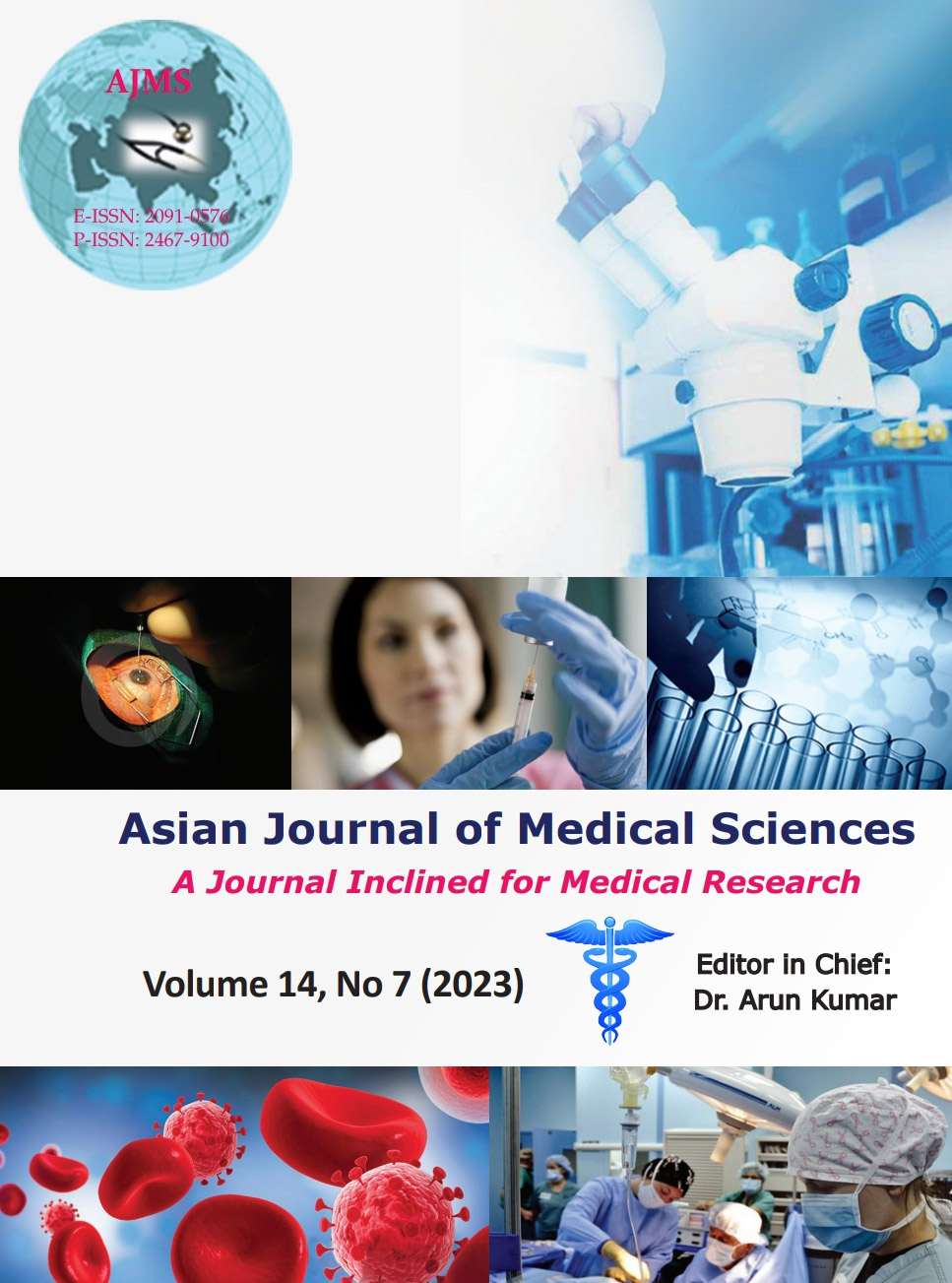Microbiological profile of abscesses of different body sites in a tertiary care hospital – the silent killer
Keywords:
Abscess; Fever; Sepsis; Susceptibility testingAbstract
Background: Abscess, an infection with viable infecting organisms and polymorphonuclear cells, contained within a fibrous capsule, limiting the infection, and preventing its further spread. It may be monomicrobial or polymicrobial.
Aims and Objectives: The aims of the study were to determine microbiological profile of abscesses of different body sites and associated complications.
Materials and Methods: An observational study was conducted in our department with 35 pus samples from abscesses of different body sites between August 2022 and December 2022. Gram stain, Z-N stain, fungal stain, aerobic, anaerobic, and fungal culture were performed. Statistical analysis was done by statistical tool R.
Results: Out of 35 samples-limb, liver,paraspinal, psoas, appendicular, breast, perineal, ear, brain and lung abscesses were 11,4,2,3,1,7,2,2,2,1 respectively. Most common organisms from limb,ear,paraspinal and breast abscesses was MRSA (Methicillin resistant Staphylococcal aureus). Also most common organisms were – Escherichia coli from liver abscess, Enterobacteriaceae and Pseudomonas aeruginosa from psoas and appendicular abscess, Enterobacter aerogenes from perineal, Escherichia coli and Actinomyces species from brain and Candida auris from lung abcesses. No growth were also found in few samples. Their susceptibility testing showed-MRSA strains susceptible to both Vancomycin and Linezolid, gram negative bacteria were susceptible to Cephalosporins, Piperacillin-tazobactam, Carbapenems, polymixins, etc. C.auris was resistant to all antifungals. Their blood samples were also collected - ten patients showed fever with bacteremia and one with candidemia . They were treated with systemic antimicrobials along with drainage and/or surgical resection.
Conclusion: Abscesses must be suspected in cases with non-resolving fever with/without septicemia and treated promptly with appropriate antimicrobials based on susceptibility report and with drainage and/or surgical resection.
Downloads
Downloads
Published
How to Cite
Issue
Section
License
Copyright (c) 2023 Asian Journal of Medical Sciences

This work is licensed under a Creative Commons Attribution-NonCommercial 4.0 International License.
Authors who publish with this journal agree to the following terms:
- The journal holds copyright and publishes the work under a Creative Commons CC-BY-NC license that permits use, distribution and reprduction in any medium, provided the original work is properly cited and is not used for commercial purposes. The journal should be recognised as the original publisher of this work.
- Authors are able to enter into separate, additional contractual arrangements for the non-exclusive distribution of the journal's published version of the work (e.g., post it to an institutional repository or publish it in a book), with an acknowledgement of its initial publication in this journal.
- Authors are permitted and encouraged to post their work online (e.g., in institutional repositories or on their website) prior to and during the submission process, as it can lead to productive exchanges, as well as earlier and greater citation of published work (See The Effect of Open Access).




